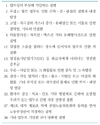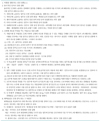Guidelines for Work-related Diseases: Health Care Worker's Standpoint
Article information
Abstract
The major occupational diseases among health care workers in Korea include infectious, cerebro-cardiovascular, and musculoskeletal diseases. Infectious diseases such as tuberculosis, viral hepatitis, and chicken pox would be compensated as occupational diseases among health care workers. Also cerebro-cardiovascular diseases would be compensated if they had overworked. Many other diseases would be compensated if they had work-relatedness. The decision of the person responsible for determining the work-relatedness of a disease must be based on an evaluation of the available information. Evidence presented by qualified professionals will generally be sufficient to answer the following questions : ① has the disease condition been clearly established? ② has it been shown that the disease can result from the suspected agent (s)? ③ has exposure to the agent been demonstrated? ④ has exposure to the agent been shown to be of a sufficient degree and/or duration to result in the disease condition? ⑤ has non-occupational exposure to the agent been ruled out as a causative factor? ⑥ have all special circumstances been weighed? ⑦ has the burden of proof of causation been met-did the evidence prove that the disease resulted from, or was aggravated by, conditions at work? If the answers to all of the above are "Yes", the decision can be made that the disease is occupational in origin. Occupational safety and health programs are not yet sufficient in Korea. Occupational safety and health programs are very important to health care workers, and so special management, policies, and laws relevant to these issues should be promulgated.



